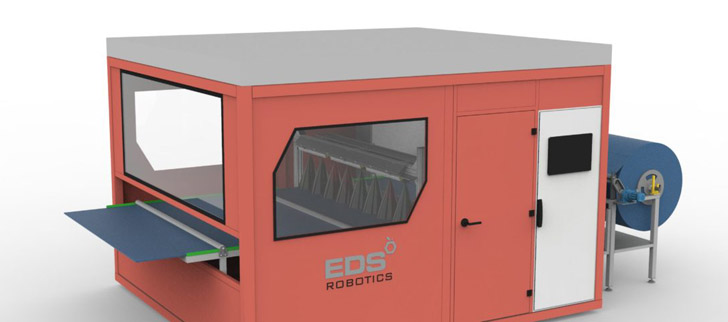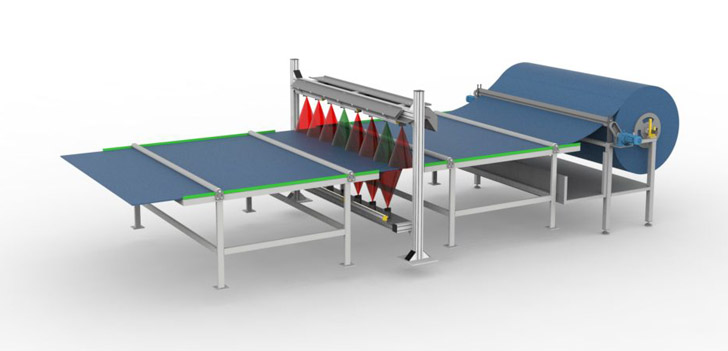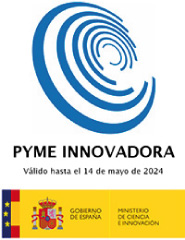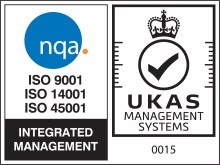
For industries operating metal winding, plating, and printing machines, defect detection and coil inspection systems are the best way to offer reliability and high production speeds to consumers.
By applying machine vision, it is possible to conduct rigorous surface checks, automate the production line, and offer competitive advantages.
Stay with us to discover how these systems work and how they are transforming the industry of tomorrow.
What is a Coil Inspection System?
A coil inspection system is a mechanism comprised of multiple devices designed to meticulously inspect the entire surface of a coil, centimeter by centimeter.
These systems can unwind the coil, identify surface anomalies, remove defective segments, rejoin the material, and rewind the coil—all at high speeds.
There are multiple models available, ranging from inspection to modification based on quality controls.
This allows for the introduction of a master coil into the production line, which can then be segmented into smaller coils, defects removed, thickness corrected, and even printing adjusted, depending on the specific needs of the sector.
How Does Coil Inspection Work?
Although each model on the market employs its own techniques to add value to the material, they all share the same core principles.
Coil inspection systems are equipped with a set of cameras that support machine vision, allowing powerful software to analyze a surface and detect anomalies.
Without any downtime, the components integrated into the inspection line remove defective segments and rejoin the ends.
In the metal coil market, for example, high-speed rotary shears, oilers, and laser welders are often incorporated to complete the process.
Cross and central cutters can be included to separate the coils into several segments.
In the final stages of production, an additional checker can be incorporated to measure details such as the volumetric value of the coil, preventing any potential incompatibility with the customer’s standard unwinding tools.

Applications of a Coil Inspection System
In a general analysis, these systems allow for the complete automation of levels 2 and 3 in a production line that specifically works with coils.
While the highest demand comes from metal sheet winding, which is vital for the metallurgical and steel industries, these systems are also extremely useful for inspecting paper, textiles, leather, plastic film, and label printing.
Because machine vision is minimally invasive, it can be utilized with delicate materials.
These inspection systems can be adapted for tasks such as:
- Detecting plating defects
- Removing defective surfaces
- Automatic edge measurement
- Automatic thickness measurement
- Inspection of printed marks for traceability
- Detecting anomalies in color, shapes, symbols, or barcodes
- Control in label production
- Moving material at high speed without coil displacement
The Role of Coil Inspection in Quality Control
Because these systems can operate at speeds of up to 600 m/min with a high level of non-invasive anomaly detection and correction, without downtime or the need for operator disassembly, they are considered the best option for automating quality control.
All of this is achieved with a level of efficiency that is impossible to replicate with human labor.
Advantages of Coil Inspection Systems
Here are the main advantages or benefits of applying coil inspection systems to the industrial sector:
- High productivity without sacrificing quality control
- Process automation
- Collaborative work capability
- High production control
- Significant reduction in defect-related refunds
- Reduction in energy costs
- Minimization of downtime
- Reduced need for human labor in dangerous or stressful tasks
- Easy integration into any production line
- Optimization of operations
- Easy maintenance
Coil Inspection for SMEs
Initially, the machine vision technology required for these systems represented a high investment cost and space requirements. However, this is a thing of the past.
The latest coil quality control equipment can include a select group of affordable, high-performance tools, ideal for small and medium-sized industries looking to expand their production horizons.
As these companies explore the system’s capabilities, they can gradually incorporate tools to move from mere supervision or anomaly detection to complete automation at a low cost.
Conclusion
Coil inspection through machine vision is a valuable example of the power of automation in the production processes of tomorrow and the impact it has on the quality of the final product.
By directly benefiting the consumer, it not only allows for achieving higher production standards in the market, creating a differentiating value, but also enhances the brand’s impact.
Are you ready to incorporate this transformative solution and secure your place in the Industry 4.0 model? We are here to guide you!

